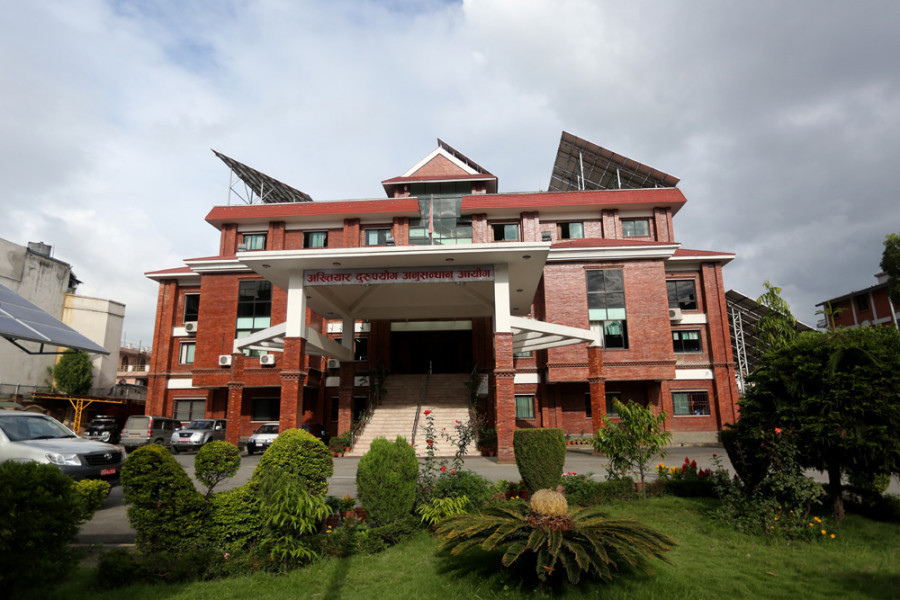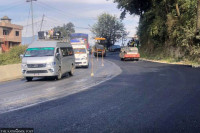National
Complaints against local governments paint bleak picture of the grassroots
Local governments are mobilising resources like never before, but they lack the experience and skills to do so, experts say.
Prithvi Man Shrestha
Questions have been raised about governance at the local level as the number of complaints filed at the country’s anti-corruption watchdog against local governments and the size of unaccounted expenditure on their books have both soared in the past few years.
Local governments are mobilising resources like never before and they face a huge challenge doing so, especially as most representatives lack the required knowledge and experience. Many local governments are also yet to prepare laws and regulations that guide the expenditure of the local governments in different sectors.
“Unaccounted expenditure at the local level has remained high as representatives can’t follow the rules properly. In some cases, they can’t file necessary paperwork and in others, local representatives are engaging in irregularities deliberately,” said Gyanendra Poudel, spokesperson for the Financial Comptroller’s General Office.
“As local governments are new, they don’t have established frameworks regarding governance and lack competent human resources,” said Poudel.
Ever since the local elections were held in 2017, the number of complaints filed at the Commission for Investigation of Abuse of Authority about irregularities in local bodies has grown tremendously. According to the anti-graft body’s annual report for 2019-20, complaints related to the Federal Affairs and General Administration—the ministry overseeing local governments—were the highest (30.07 percent) followed by the education ministry (16.36 percent) and the land administration ministry (8.29 percent).
According to the commission, most complaints categorised under the federal affairs ministry, are related to local governments. This is also evident from the fact that in 2013-14, when the local governments were not formed, only 14.6 percent of the total complaints filed at the CIAA were related to the then-local development ministry ( now Ministry of Federal Affairs and General Administration).
Figures from the CIAA show that complaints about irregularities in the local levels topped the charts in 2018/19 when 26.87 percent of the complaints were related to the federal affairs ministry. During 2017/18, the ministry’s share of such complaints was 18.2 percent, according to the commission.
Not only have complaints about irregularities at the local levels increased, but the size of unaccounted expenditures (irregularities) has also soared, according to the Financial Comptroller General’s Office, which keeps track of the government’s income and expenditure.
According to its internal audit report, the unaccounted expenditure of local governments stood at Rs4.22 billion, the highest among government agencies. The Ministry of Home Affairs came second with an accounted expenditure of Rs4.17 billion.
The indicators, which point towards poor governance, are parts of a trend that has been observed since elected representatives took charge of local governments.
A survey conducted by the CIAA last year had also found that the majority of people believed corruption has been growing at the local level. The report, ‘Study on Corruption at the Local Level,’ unveiled by the anti-graft body in January showed that more than 50 percent of the respondents said corruption at the local level either remained as it was in the past or was thriving.
As many as 27.3 percent of the respondents had said that corruption at the local level had increased after local elections. Similarly, another 28 percent said that corruption continued to exist like in the past.
Among the respondents, 14.9 percent said they were forced to pay bribes to receive services from their local units. The anti-graft body had surveyed 3,000 people in 15 districts. Both quantitative and qualitative methods were used for the survey.
Another study unveiled by the anti-graft body in early 2019 also found that the local governments were the second most corrupt institutions, only after land revenue offices.
According to the survey report, “Study on Corruption and Good-Governance in Nepal-2075”, the highest number of respondents (55 percent) termed land revenue offices as the most corrupt while 41.6 percent said they had to pay extra money to receive services from municipalities and rural municipalities.
Khim Lal Devkota, an expert on federalism, said that irregularities at the local levels flourished as they have control over unmatched resources compared to the past. But they are being run without regulatory oversight.
For the current fiscal year, the government allocated Rs 262.75 billion for local governments as fiscal equalisation and conditional grants from the federal government while they also get fiscal transfers from provincial governments. The local governments can raise revenue through various services. “When there are more resources, the tendency to get involved in corruption grows,” said Devkota.
He said that even the federal affairs ministry failed to play the role of the guardian. “It should have reminded them about the rules and regulations to be followed,” he said.
According to him, a large number of local governments have failed to prepare annual development programmes with specific budgets and objectives.“The projects and budget are allocated based on political power-sharing after they are endorsed by the assembly,” Devkota added.
In fact, over a dozen local governments are yet to present their budget for the current fiscal year, although they were supposed to do so by June 25.
According to officials at the federal affairs ministry, such local governments are spending money without convening their municipal assembly. In early December, an official at the federal affairs ministry said that the ministry has proposed an amendment to the Local Level Operation Act 2017 to bar local governments from spending a single penny without getting its budget approved by the assembly.
Likewise, the federal affairs ministry has also envisioned the creation of public accounts committees which will hold discussions on the unaccounted expenditure of local governments and things done by violating existing legal provisions.
Meanwhile, representatives from the local governments don’t agree that corruption is thriving in the municipalities. “An increment in the number of complaints filed at the Commission for Investigation of Abuse of Authority does not prove that corruption is thriving at the local level,” said Ashok Bhyanju Shrestha, chairperson of Municipal Association of Nepal, a grouping of municipalities. “Only when the number of convictions grows, can you say that local governments are corrupt.”
He, however, admitted that unaccounted expenditure might have gone up at the local levels. “It is because many office bearers and staffers don’t have proper knowledge about public procurement laws and local governments must work instantly to serve the people as early as possible,” said Shrestha, Mayor of Dhulikhel municipality.
Shrestha said that the lack of adequate accounting staffers also contributed to increments in unaccounted expenditure.




 16.57°C Kathmandu
16.57°C Kathmandu









%20(1).jpg&w=300&height=200)





